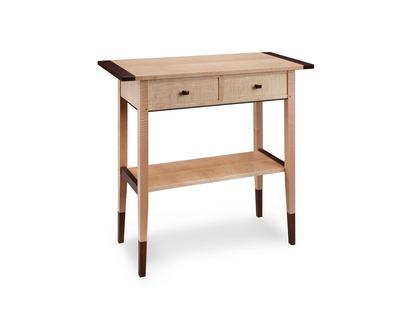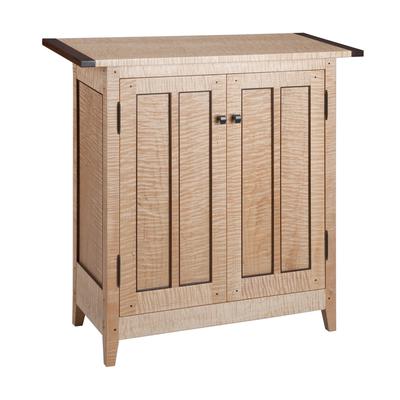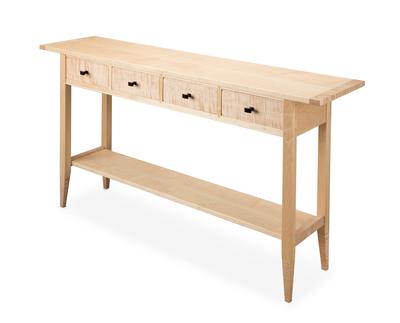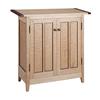Tiger Maple Wood

Tiger maple wood, also known as curly maple or flame maple, is a type of wood with a distinctive pattern that resembles waves or "tiger stripes." This unique appearance is due to the way the wood fibers grow, creating a chatoyant effect. It's often used in high-end furniture, musical instruments, and decorative items due to its visual appeal. The wood is usually more expensive than regular maple due to its rarity and the challenges involved in processing it. It can be found in a range of colors, from light to dark, and the figure can vary in intensity, giving each piece a unique character.
It also isn’t known solely as tiger maple. In fact, depending on how you use it and where you’re from, you may have also heard tiger maple called curly maple, ripple maple, flame maple, and occasionally even as bird’s eye maple, although sometimes bird’s eye is a term reserved for a different character of wood grain.
What these names all have in common is that they refer to the same basic aberration of the grain of maple wood that gives them this particular character that looks something like streaks of flame or of a tiger’s stripes. That’s the reason for the name. This pattern of wood can immediately be recognized by it’s “brindle” like appearance and alternating stripes of dark and light grain.
It was commonly used in the early periods of American history in the construction of tools, furniture, and firearms, and for these reasons, some consider it a hallmark of American design and Americana. That, coupled with its uncommon beauty and striking nature makes it very popular among designers and collectors.
Tiger maple is not common, even among maple wood. It forms as the result of uncommon and inconsistent stressors to the wood fibers as the tree grows. When the fibers twist and compress upon themselves, they occasionally produce the distorted grain pattern that is recognizable in tiger maple furniture.
Lucky for woodworkers and other people who covet this particular patterning of grain, tiger maple wood is easy to work with many machine and hand tools and responds well to both gluing and finishing. In fact, depending upon the finish, the wood may appear even more vibrant and beautiful.
If you’ve ever handled a piece of tiger maple or investigated it closely, you may be familiar with the fact that depending upon how it is finished and how the light strikes it and interacts with it, it may appear to glow or present three-dimensional qualities in the grain. While this feature is not exclusive to tiger maple, it is known as chatoyance and it is a highly coveted quality in wood.
Something interesting about tiger maple furniture - and tiger maple in general - is the fact that the pattern of stripes or flames, as they were, runs parallel to the grain of the wood. That is to say, if you look closely along the grain of the wood, the stripe pattern will lay at intervals across your line of sight. It is important to note this because otherwise, it might appear that the method of construction of some tiger maple would have weakened the structure, but this would not be the case given the orientation of the grain.
Beautiful and exquisite, tiger maple furniture is some of the might highly sought after in the world, and luckily, a lot of it is produced right here in the United States. If you’re looking for a homegrown, grassroots look, tiger maple may well be it.
Discover the timeless allure of Tiger Maple furniture at Thomas William Furniture. Crafted with meticulous attention to detail, our pieces showcase the mesmerizing interplay of nature's artistry and masterful craftsmanship. Each item exudes a rich elegance, with its undulating waves of tiger stripes dancing across the surface, capturing the essence of movement and depth. Whether it's a captivating cabinet or a sofa table, our Tiger Maple creations are more than just furniture – they're works of art that elevate your surroundings. Elevate your living spaces with the unparalleled beauty of Tiger Maple, exclusively at Thomas William Furniture.
Click here to view new work!















